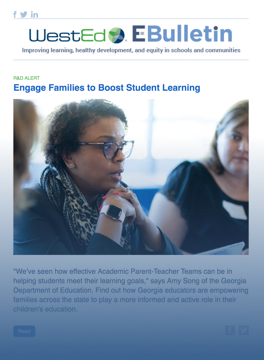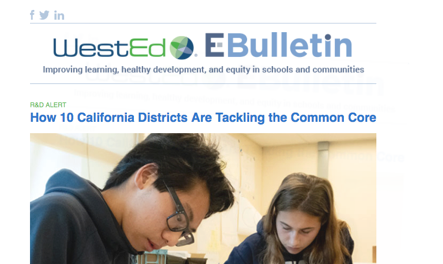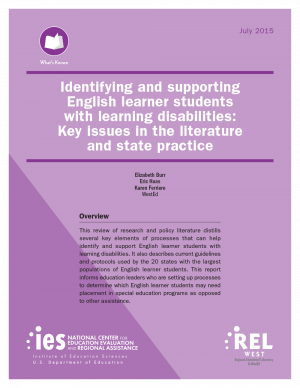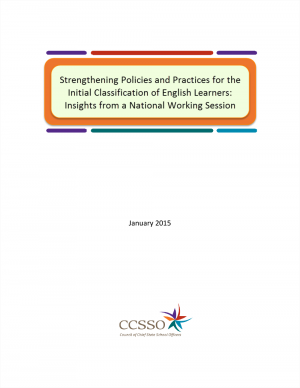Identifying and Supporting English Learner Students with Learning Disabilities: Key Issues in the Literature and State Practice
Description
While the literature on learning disabilities and on second-language acquisition is relatively extensive within the field of education, less is known about the specific characteristics and representation of English learner students with learning disabilities.
Schools, districts, and states struggle with this issue because there are no definitive processes for identifying and determining the best academic placement for English learner students with learning disabilities. As a result, this student population is both over- and underrepresented in special education classes, and their education suffers when they are mismatched with their academic program.
This Regional Educational Laboratory West (REL West) report aims to help policymakers develop procedures for identifying, assessing, and placing English learner students who may or may not have learning disabilities. The report describes the key issues discussed in research literature and current state procedures for the 20 states with the largest English learner populations.
This report responds to two important research questions:
- What issues do previous studies raise about identifying, assessing, and supporting English learner students with learning disabilities?
- What procedures, including guidelines and protocols, do the 20 states with the largest populations of English learner students use to identify, assess, and support English learner students with learning disabilities?
Resource Details
Product Information
Copyright: 2015Format: PDF
Pages: 62
Publisher: U.S. Department of Education, Institute of Education Sciences
Available Previews
Stay Connected
Subscribe to the E-Bulletin and receive regular updates on research, free resources, solutions, and job postings from WestEd.
Your download will be available after you subscribe, or choose no thanks.







